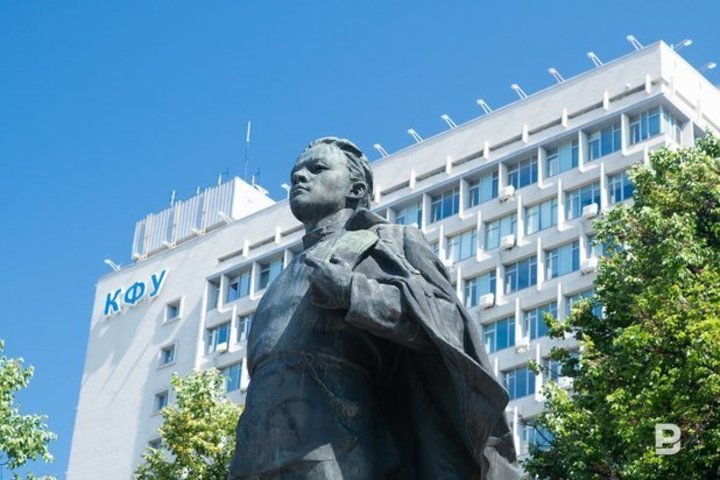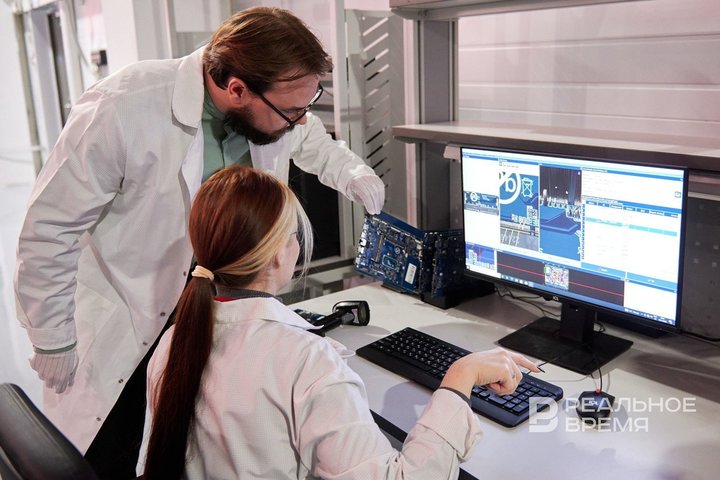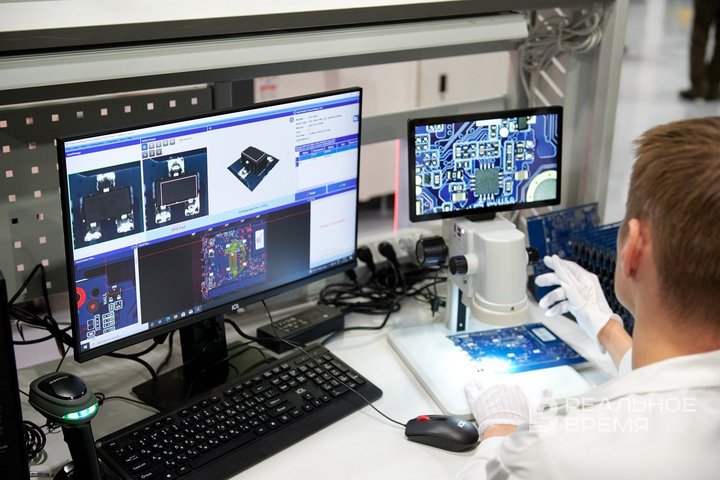‘Somebody will unlikely be able to push the leaders out’: Chernyshenko is preparing an updated National Rating
Tatarstan wants to remain on the podium of the updated National Rating of Scientific and Technological Development

This November, the federal authorities will announce the results of the National Rating of Scientific and Technological Development of the Russian regions for 2023. Head of the Academy of Sciences of the Republic of Tatarstan Rifkat Minnikhanov sets the task of staying in the group of leaders — Tatarstan took 2nd place in 2022 with 221.7 points, having risen from 5th place with 192 points in a year. Preliminary results for 2023 are available, but are not announced until agreed with the relevant authorities. Minnikhanov himself names several vulnerable positions and asks to provide tax incentives to research centres. “The gap from other regions is so large that someone will unlikely be able to push the leaders out,’ says RIA Rating’s CEO Valery Tretyakov.
Who will remain on the podium?
The preparation of the National Rating of Scientific and Technological Development of the regions of the Russian Federation for 2023 supervised by Deputy Prime Minister Dmitry Chernyshenko is nearing completion. The names of the winning regions will most likely be announced no later than this November. The points scored by the regions during the rating study are currently being compared, Realnoe Vremya’s sources claim.
“The results of the National Rating of Scientific and Technological Development of the reions of the Russian Federation for 2023 will be sent to the Government of the Russian Federation by 1 October 2024,” the press service of the Ministry of Science and Higher Education of the Russian Federation told Realnoe Vremya. “Then they must be approved by the Commission for Scientific and Technological Development of the Russian Federation by 1 November 2024. After that, the results of the rating will be published on the official website of the Ministry of Education and Science of Russia.” It is not specified how the positions will be distributed among the leaders of the first group — Moscow, Saint Petersburg and Tatarstan. Most likely, the rivalry will unfold between Tatarstan and St Petersburg, which are displacing each other from 2ndplace, Realnoe Vremya's sources believe.
The National Ranking of Scientific and Technological Development of the regions of the Russian Federation is an untested tool for assessing the scientific potential of regions, which the federal authorities needed in light of international sanctions. The ranking of regions was launched for the first time three years ago. According to the results of 2021, Moscow, St Petersburg, Tomsk Oblast were on the podium, and Tatarstan took 5th place scoring 192 points. The following year, the republic regained its position rising to 2ndplace with 221.7 points andovertaking its closest competitors. This year, the top positions are not going to be given up either. As head of the Academy of Sciences of the Republic of Tatarstan Rifkat Minnikhanov stated earlier, the task is to stay in the group of leaders but to remain in the top 3. “Last year, we managed to significantly improve in the National Rating, overtaking the recognised leaders — the scientific centres of St Petersburg and Tomsk Region. Now it is important to maintain the high level we have achieved,” Rifkat Minnikhanov said in April when delivering a report to the State Council of the Republic of Tatarstan.
True, this year the methodology for assessing the scientific and technological revolution of the regions has become more complicated. If earlier the IQ indicator of each region was assessed by 33 criteria, now 11 more have been added to them. As a result, the integral figure is calculated based on 44 indicators, which means that the competition for the podium is intensifying.
Where we can yield to the “champions”
It cannot be said that the in-depth rating has not disturbed the Academy of Sciences of the Republic of Tatarstan, which is responsible for the results of the National Rating of Scientific and Technological Revolution. Rifkat Minnikhanov highlighted several positions that could pull the rating points down. Considering that the rating is calculated based on the Russian Statistics Service’s data, the insufficient number of research scientists with a scientific degree in the republic's universities compared to St Petersburg and Tomsk could have a negative impact. According to this indicator, Tatarstan ranks 58th out of 85 regions, according to the rating of innovative development of regions prepared by the Institute for Statistical Research and Economics of Knowledge of the Higher School of Economics this August.

There are also more complex and vulnerable points. For example, the indicator of high-tech and knowledge-intensive industries in the republic's GRP is concerning, although Tatarstan ranks 10th in terms of the share of people employed in high-tech industries. The indicator of provision with research infrastructure facilities, the share of funding for scientific, scientific-technical and innovative projects in a constituent entity of the Russian Federation, attracted from development institutions, in the gross regional product, the ratio of exports and imports of technologies and services of a technological nature (including rights to the results of intellectual activity) are also concerning, Rifkat Minnikhanov said earlier.
The expansion of the number of assessment indicators is due to the fact that most constituent entities are characterised by uneven scientific development. The new assessment scale will smooth out the lags in their development, the authors of the new methodology believe. The head of the Academy of Sciences of the Republic of Tatarstan agrees that “the introduction of eight additional analytical indicators will make it possible to see a wide range of actions by regional and federal authorities in the regions, allowing them to achieve effective results in scientific and technological development.”
What alternative IQ ratings of regions provide with
The National Rating of the Scientific and Technological Region is not the first to rank regions by scientific and technological development. The development features of each region were revealed in private independent ratings.

The Institute of Statistical Research and Economics of Knowledge of the Higher School of Economics based on 55 indicators and the Centre for Economic Research RIA Rating of Russia Today media group are considered to be the most authoritative of them. Their approaches to rating regions are also used in compiling the National Rating. “Official ratings are agreed upon with the government of the Russian Federation, but alternative ratings — the Higher School of Economics and RIA Rating from Russia Today media group — are not,” head of RIA Rating Vitaly Tretyakov explained to Realnoe Vremya. “These are three completely different ratings. Some parts of the methodology will form the basis of our rating. It is unclear to us to what extent all the aspects voiced by the experts of the Higher School of Economics are taken into account. But there are some points that both we and the HSE rating have. It is simply impossible for some parameters not to be taken into account. Nevertheless, they have their own methodology, which is difficult to comment on”
Advanced, but without physics and chemistry
It is interesting that in both ratings Tatarstan confidently occupies 3rdplace. Thus, in the August rating of the Institute of Statistical Research and Economics of Knowledge of the Higher School of Economics, three regions shared the podium. Moscow remained in 1st place for the 7th time, St Petersburg pushed Tatarstan out of 2nd place. Third place is an integrated indicator for five mini-ratings. The republic received the bronze for its leadership in innovation activities and the quality of its innovation policy, 3rd place in creating economic conditions for science, 13th place for export activity and 14th place for the development of scientific and technical potential.

True, experts have found heterogeneous educational potential. On the one hand, the republic is ahead in terms of coverage of the population with higher and secondary vocational education, taking 15th place. But, on the other hand, it is dominated by those good at humanities rather than tech-savvies. Tatarstan has dropped in terms of the share of students studying in STEM programs (i.e. mathematics, physics, chemistry, computer science). If a year ago the republic took 17th place, now it is 21st. Moreover, the gap between them is growing, and fewer and fewer young people are eager to study technical sciences.
The closest neighbour, Bashkortostan, on the contrary, shows the opposite results. The republic received 5th place in terms of the share of STEM students in higher education, far ahead of Tatarstan. At the same time, the republic was almost at the bottom in terms of the share of the population with higher education — 62nd place.
The imbalance in professional training continues to grow. In terms of the number of students in secondary specialized education, the republic dropped to 57th place instead of 44th. However, the republic admits that it is time to balance educational programs with an emphasis on training workers in STEM disciplines. Otherwise, the shortage of “blue collars” will continue to worsen.
A large gap from the overall group
Will Tatarstan remain in the group of leaders? “Someone from the lower group will unlikely be able to push, in particular, Moscow and St Petersburg, Tatarstan out. Because the positions are strong, and the gap in many indicators is very large,” says head of RIA Rating Valery Tretyakov. Tatarstan's strong position is due to its diversified economy, which creates demand for innovation in various fields — from the fuel and energy complex to aircraft manufacturing. “The high positions are explained by a strong economy and developed industry. This development is based, among other things, on innovations and technological solutions. This is an amazing combination of industries, which gives a powerful impetus to science,” he noted.
“The republic’s multi-industry economy determines the diversity of scientific interests. Conventionally speaking, petrochemistry expects promising and relevant developments in the field of new materials from science, oil workers — technologies and reagents for efficient oil production, and the aviation industry — new materials and design solutions, this is a wide range of deep scientific problems and tasks, “ agrees KFU Vice Rector Danis Nurgaliyev. “And the weak point is that Kazan is not the first, but the “third capital of Russia.” We have strong scientific centres, the best in the country, excellent infrastructure and wonderful scientists, but large capitals still continue to attract young advanced guys from Tatarstan. Our task today is to become even better, stronger and more attractive!”